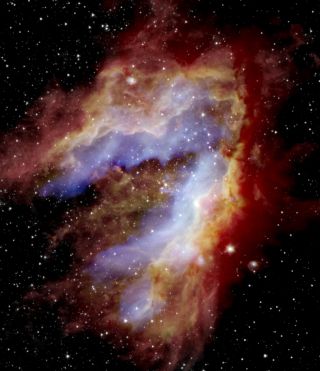
Thanks to new observations by a telescope built in to a massive airplane, we know more about the origin story of a star factory than ever before.
That factory is a vast cloud of gas called the Swan Nebula, located about 5,000 light-years away from Earth. And using the NASA-German Aerospace Center (DLR) Stratospheric Observatory for Infrared Astronomy (SOFIA) telescope, a team of astronomers determined that the nebula seems to have continued developing for longer than they’d expected.
The SOFIA telescope is mounted on a high-flying Boeing 747SP airplane and offered the researchers a new view of the nebula that unveiled nine newfound “protostars,” or young stars embedded in the thickest parts of the gas. The observations also showed that parts of the nebula were formed at different times.
Related: Photos from SOFIA, NASA’s flying telescope
“This is the most detailed view of the nebula we have ever had at these wavelengths,” Jim De Buizer, a senior scientist at the SOFIA Science Center at NASA’s Ames Research Center in California, who participated in the research, said in a NASA statement. “It’s the first time we can see some of its youngest, massive stars and start to truly understand how it evolved into the iconic nebula we see today.”
The new image the team created shows how SOFIA’s work complements the observations of other telescopes. SOFIA’s data, in blue, show how the gas warms up due to massive stars in the center of the Swan Nebula. Green represents dust warmed up by older and newer stars. In red is colder dust observed by the European Space Agency Herschel telescope, while the white stars were picked up by NASA’s soon-to-retire Spitzer Space Telescope.
Before the observations, astronomers thought that the Swan Nebula had formed all at once. But SOFIA found that the central part of the nebula is the oldest. The northern region of the nebula formed next, while the southern region is the youngest.
SOFIA’s sharp, infrared eyes allow it to pierce through obscuring gas to look at heat sources, such as young stars. And those observations will soon be even more valuable: NASA will decommission the infrared Spitzer Space Telescope on Jan. 30 after a 16-year mission that far exceeded its original design life span.
Follow Elizabeth Howell on Twitter @howellspace. Follow us on Twitter @Spacedotcom and on Facebook.







